Complete Solutions to Exercise 2.2 of chapter KINETIC THEORY OF GASES AND FIRST LAW OF THERMODYNAMICS of Class 11 book with complete answers and questions
| Class 11 | PHYSICS |
| Chapter | KINETIC THEORY OF GASES AND FIRST LAW OF THERMODYNAMICS |
| CENGAGE PHYSICS | Exercise 2.2 |
| Number Of Questions | 28 |
| Academic Year | 2023-24 |
Explain why the temperature of a gas drops in an adiabatic expansion, on basis of the kinetic theory of gases,
02:14View SolutionExplain why a gas cools on sudden expansion on the basis of the principles of thermodynamics.
01:37View SolutionA 15 g mass of nitrogen gas is enclosed in a vessel at a temperature `27^(@)`C. Amount of heat transferred to the gas, so that rms velocity of molecules is doubled, is about :
[Take `R=8.3 J//K` mole]02:31View SolutionA gas consisting of a rigid diatomic molecules was initially under standard condition.Then,gas was compressed adiabatically to one fifth of its intitial volume What will be the mean kinetic energy of a rotating molecule in the final state?
03:38View SolutionCan one distinguish between the internal energy of a body acquired by het transfer and that acquired by the performance of work on it by an etenal agent ?
01:45View SolutionA theoms flask contains coffee. It is vigorously sheken, considering the coffee as the system. (a) Does its temperature rise ? (b) Has heat been added to it ? (c ) Has work been done on it ?
02:11View SolutionDoes a gas do any work when it expands adiabatically ? If so, what is the source of the energy needed to do this work ?
01:44View SolutionA block returns to its initial position after dissipating mechanical energy in the from of heat through frictionn. Is this process reversibe or irreversible ?
01:58View SolutionExplain why the temperature of a gas drops in an adiabatic expansion, on basis of the kinetic theory of gases,
02:14View SolutionIn what process is the heat added entirely converted into internal energy of the system ?
02:04View SolutionWhen a gas is compressed adiabaticlly, it becomes more elasitc. Is this ture ?
02:04View SolutionA cylinder contains 3 moles of oxygen at a temperature of `27^(@)C`. The cylinder is provided with a frictionless piston which maintains a constant pressure of 1 atm on the gas. The gas is heated until its temperature rises to `127^(@)C`.
a. How much work is done by the gas in the process ?
b. What is the change in the internal energy of the gas ?
c. How much heat was supplied to the gas ?
For oxygen `C_(P) = 7.03 cal mol^(-1) .^(@)C^(-1)`.02:54View SolutionWhat amount of heat is to be transferred to nitrogen in an isobaric heating process so that the gas may perform 2 J work?
02:14View SolutionAs a result of the isobaric heating by `DeltaT=72K`, one mole of a certain ideal gas obtain an amount of heat `Q=1.6kJ`. Find the work performed by the gas, the increment of its internal energy and `gamma`.
03:19View SolutionA certain mass of a gas is compressed first adiabatically, and then isothermally. In both cases, the initial state of the gas is the same. Is the work done `W_(1)` in the first case greater than the work done `W_(2)` in the second case ? Explain.
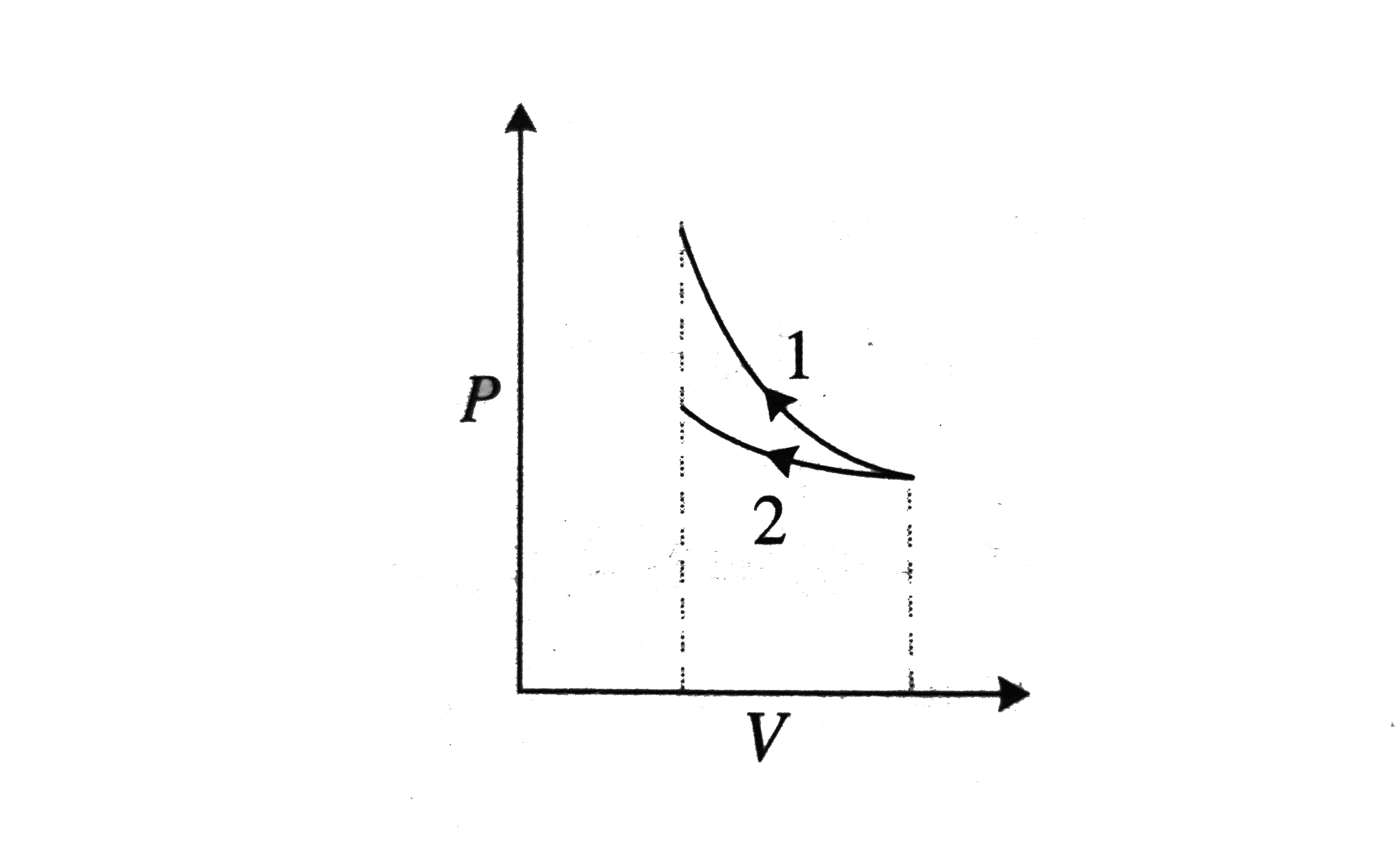 01:54View Solution
01:54View SolutionA cylindrical vessel of 28 cm diameter contains 20 g of nitrogen compressed by a piston supporting a weight of 75 kg. The temperature of the gas is `17^(@)C`. What work will the gas do if it is heated to a temperature of `250^(@)C` ? What amount of heat should be supplied ? To what distance will the weight be raised? The process should be assumed to be isobaric, the heating of the vessel as well as the external pressure is negligible.
04:41View SolutionOne mole of oxygen is heated at constant pressure starting at `0^(@)C`. How much heat energy must be added to the gas to double its volume ?
02:51View SolutionAn ideal gas expands adiabatically from an initial temperature `T_(1)` to a final temperature `T_(2)`. Prove that the work done by the gas is `C_(V) (T_(1) - T_(2))`.
01:27View SolutionAn ideal gas whose adiabatic exponent equals `gamma` expands so that the amount of heat transferred to it is equal to the decrease of its internal energy. Find
a. the molar heat capacity of the gas, and
b. the T -V equation for the process.04:39View SolutionOn mole of argon expands polytropically, the polytropic constant being 1.5, that is, the process proceeds according to the law `pV^(1.5)` = constant. In the process, its temperature change by `Delta T = - 26 K`. Find
a. the amount of heat obtained by the gas.
b. the work performed by the gas.04:29View SolutionFind out the work done in the given graph. Also draw the corresponding T -V curve and P-T curve.
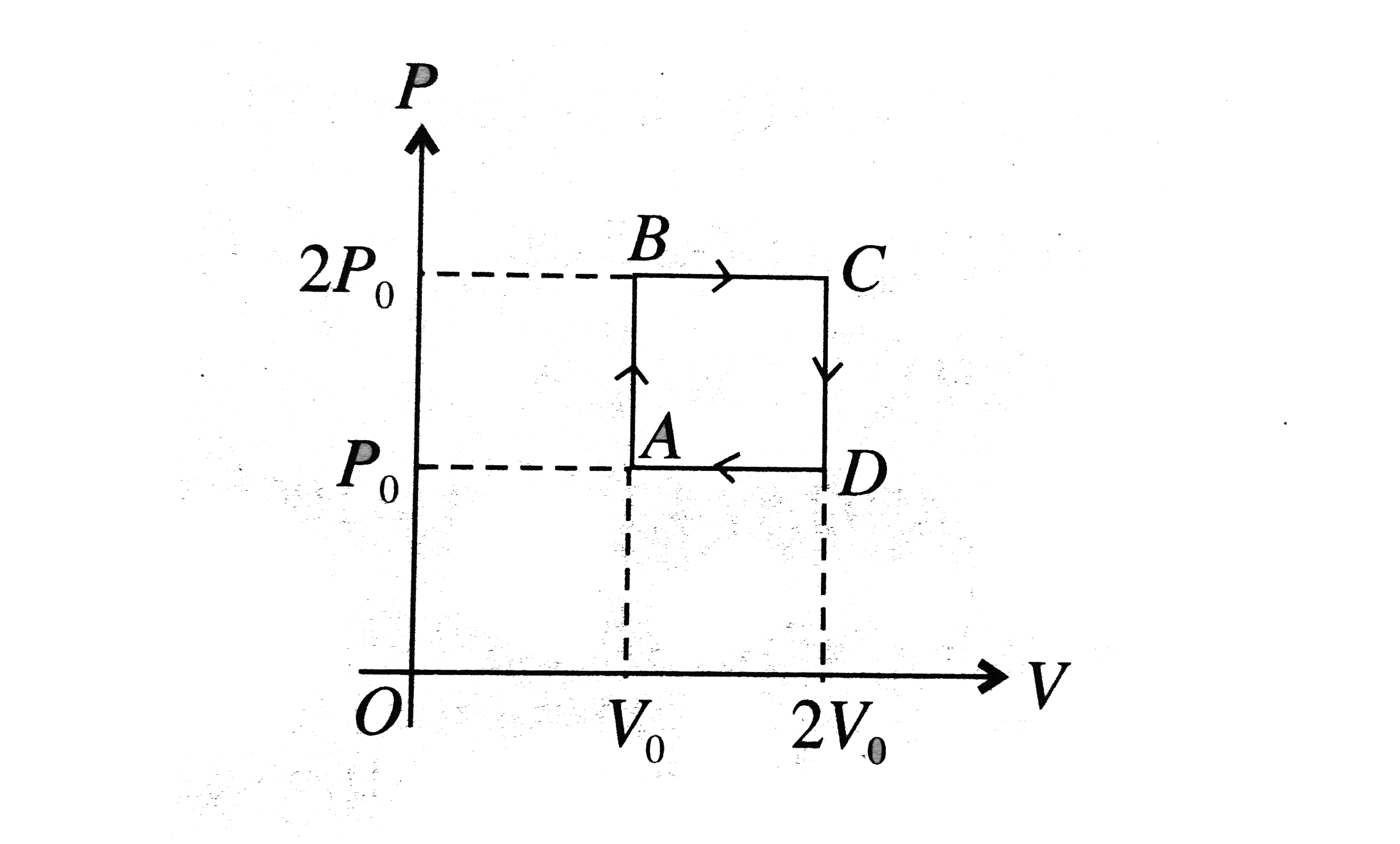 09:46View Solution
09:46View SolutionTwo moles of a diatomic gas at 300 K are kept in a nonconducting container enclosed by a piston . Gas is now compressed to increase the temperature from 300 K to 400 K. Find word done by the gas
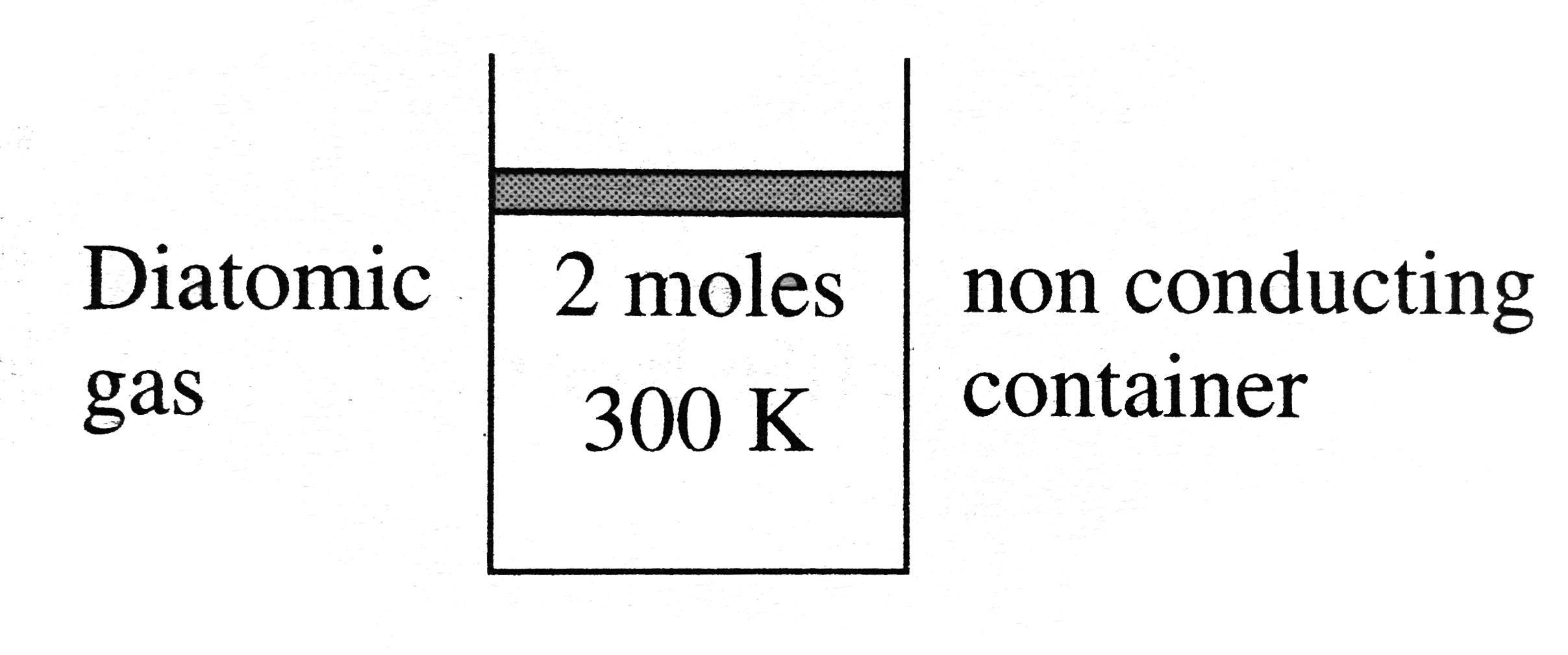 01:53View Solution
01:53View SolutionA sample of an ideal gas is taken through a cycle as shown in figure. If absorbs 50 J of energy during the process AB, no heat during BC, rejects 70 J during CA. 40 J of work is done on the gas during BC. Internal energy of gas at A is 1500 J, the internal energy at C would be
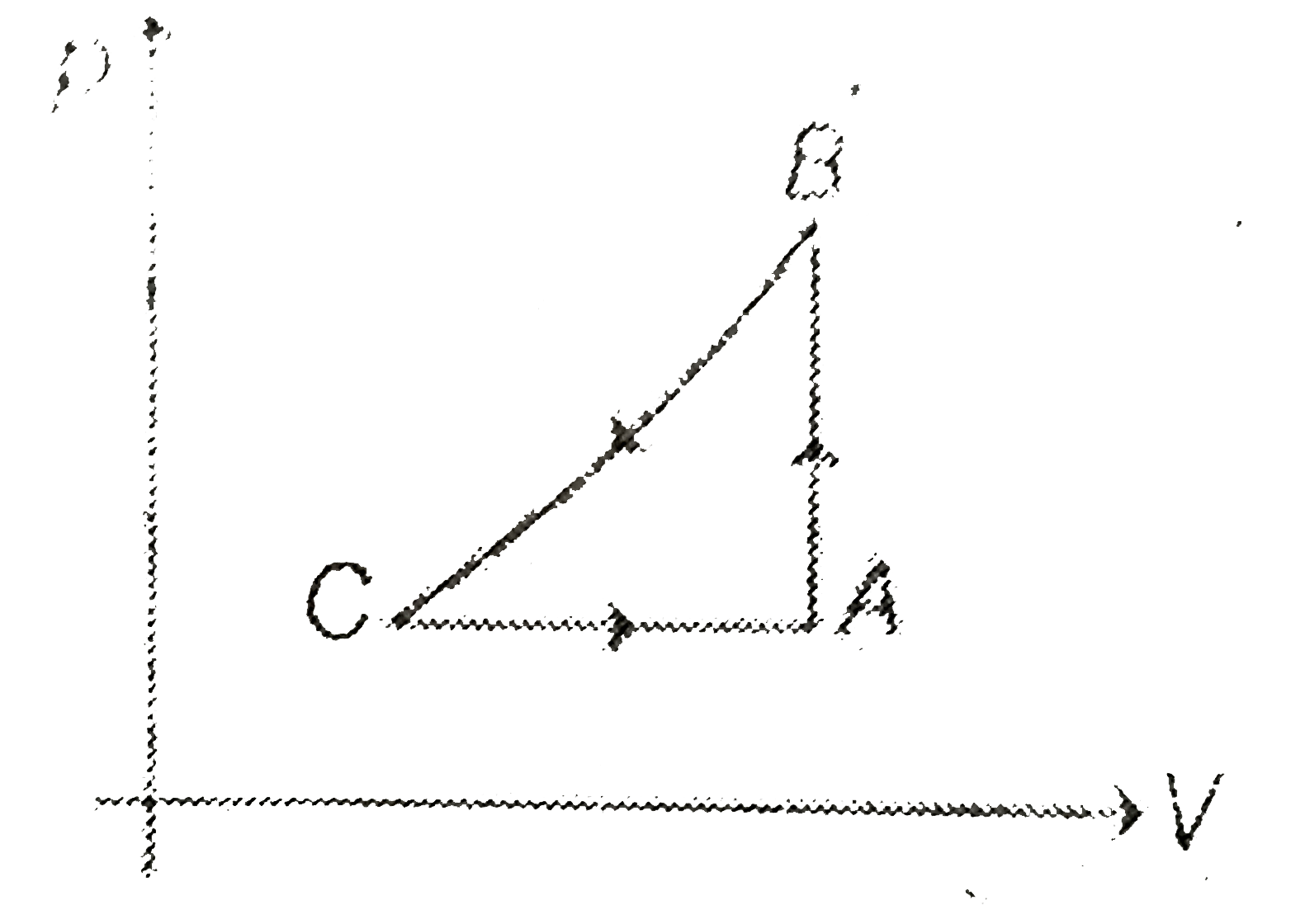 05:04View Solution
05:04View SolutionThe internal energy of a monatomic ideal gas is 1.5 nRT. One mole of helium is kept in a cylinder of cross section `8.5 cm^(2)`. The cylinder is closed by a light frictionless piston. The gas is heated slowly in a process during which a total of 42J heat is given to the gas. if the temperature rise through `2^(o)C`, find the distance moved by the piston. atmoshphere pressure `=100 kPa.
05:12View SolutionA sample of ideal gas `(gamma = 1.4)` is heated at constant pressure. If `140 J` of heat is supplied to gas, find `DeltaU` and `DeltaW`.
04:18View SolutionP-V curve of a diatomic gas is shown in the Fig. Find the total heat given to the gas in the process `A rarr B rarr C`
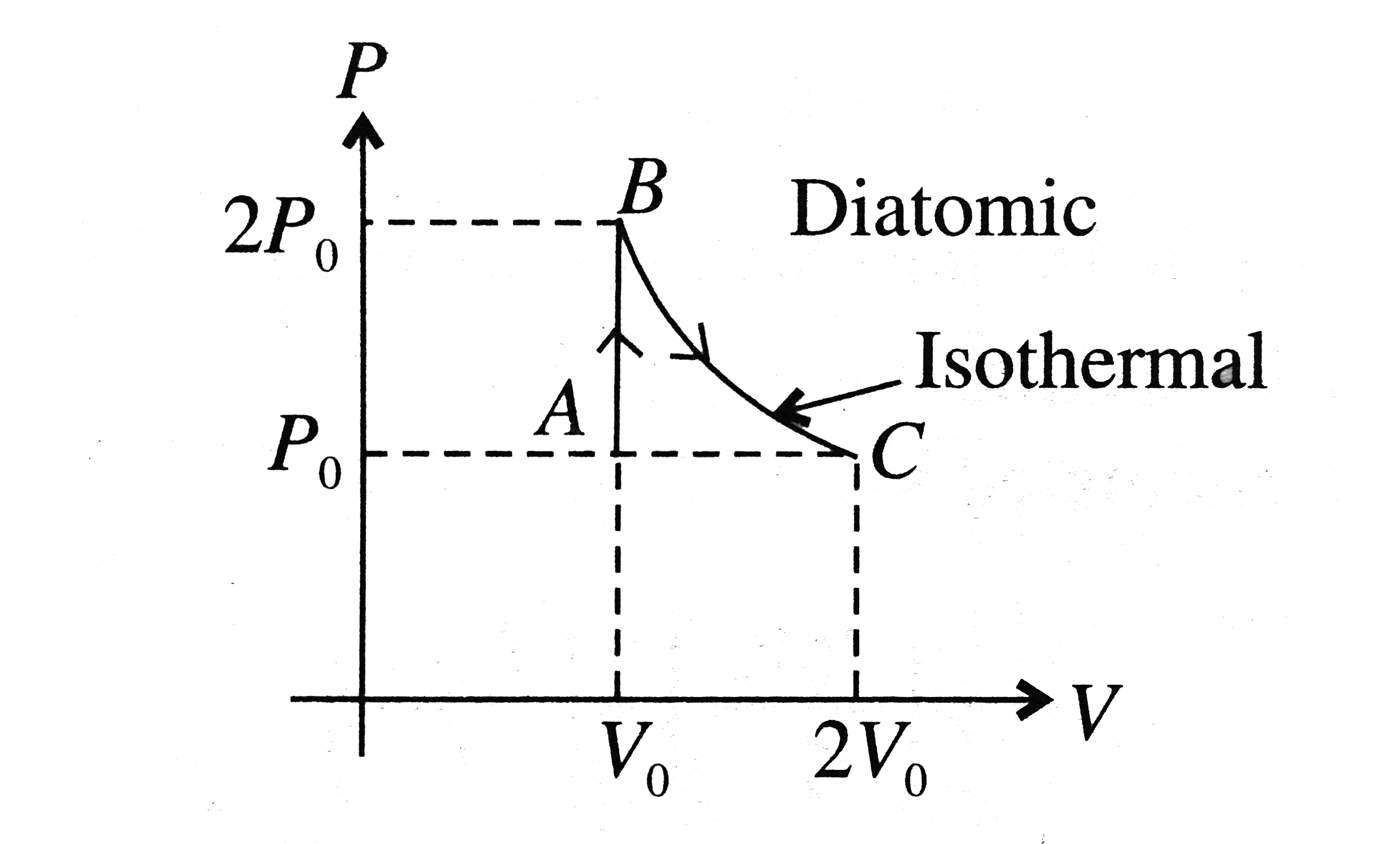 02:02View Solution
02:02View SolutionA monoatomic gas is enclosed in a non-conducting cylinder having a piston which can move freely. Suddenly gas is compressed to `1//8` of its initial volume. Find the final pressure and temperature if initial pressure and temperature are `P_(0)` and `T_(0)` respectively.
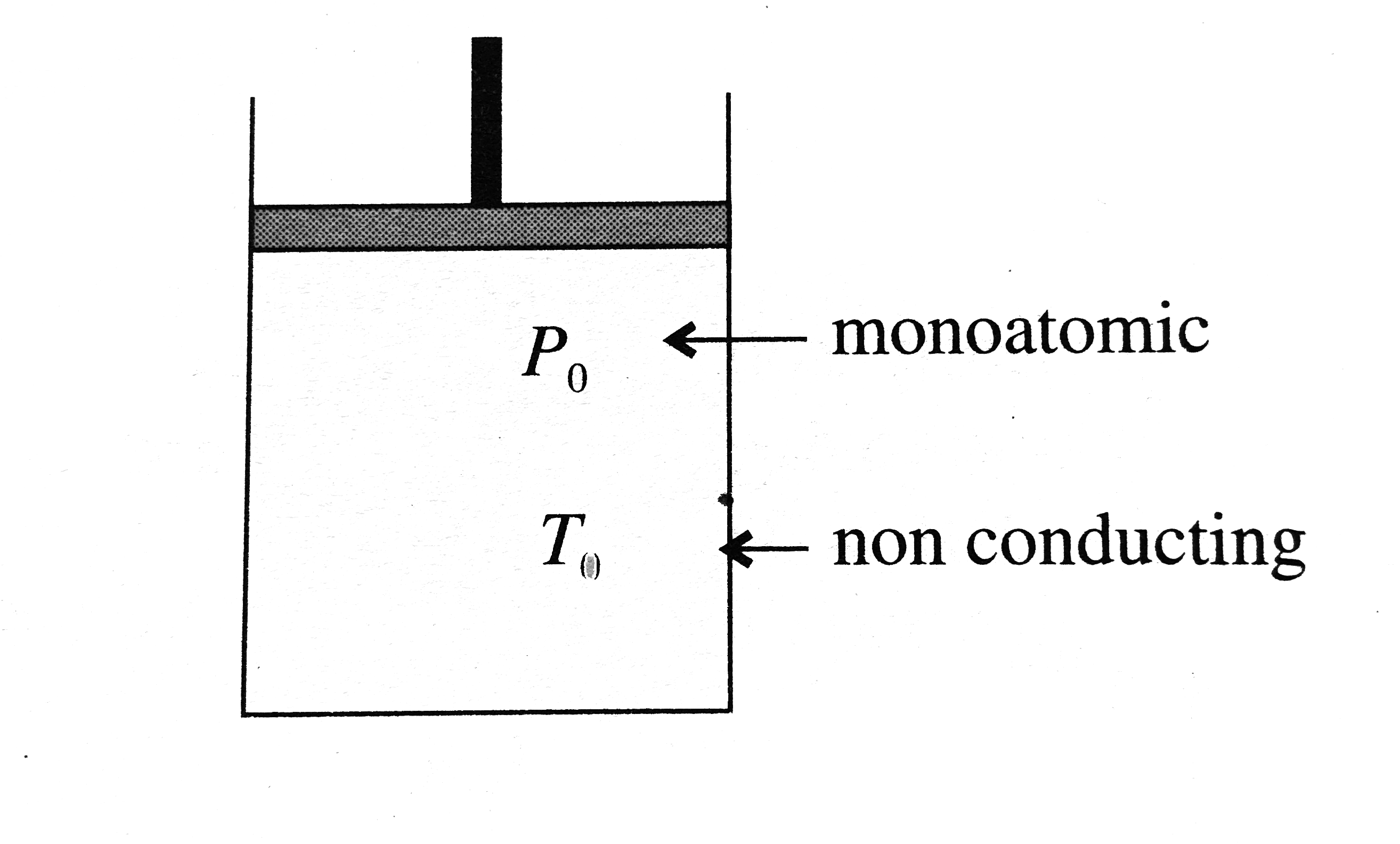 02:14View Solution
02:14View SolutionA non-conducting cylinder having volume `2 V_(0)` is partitioned by a fixed non conducting wall in two equal part. Partition is attached with a valve. Right side of the partition is a vacuum and left part is filled with a gas having pressure and temperature `P_(0)` and `T_(0)` respectively. If valve is opened find the final pressure and temperature of the two parts.
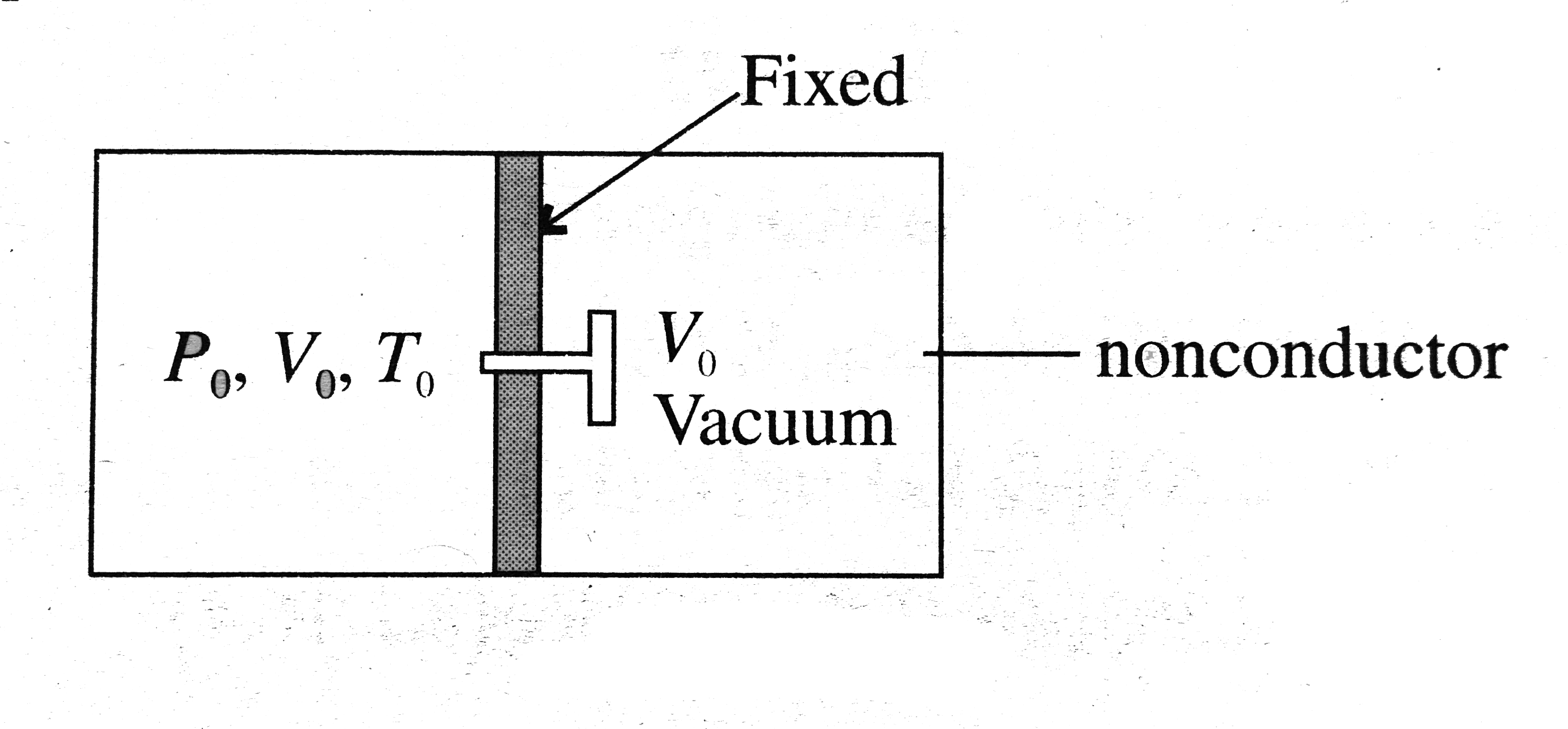 01:54View Solution
01:54View Solution
Exercise 2.2 questions and complete solutions for chapter KINETIC THEORY OF GASES AND FIRST LAW OF THERMODYNAMICS of CENGAGE PHYSICS (ENGLISH) of Class 11
